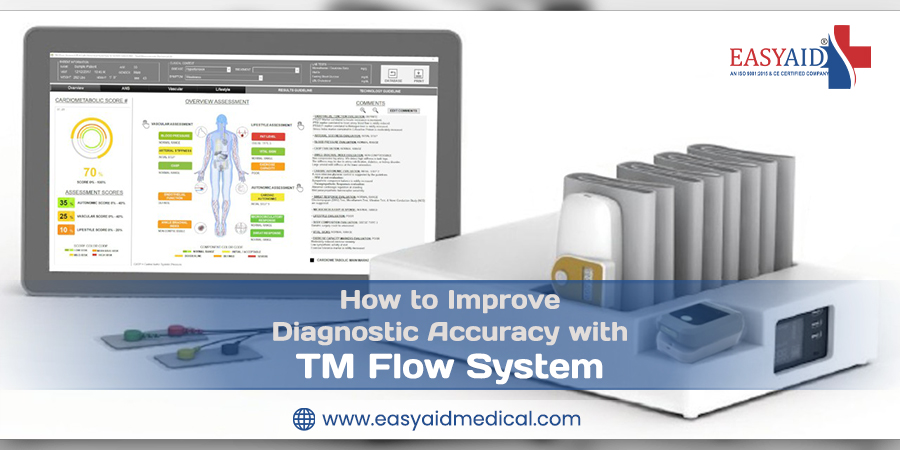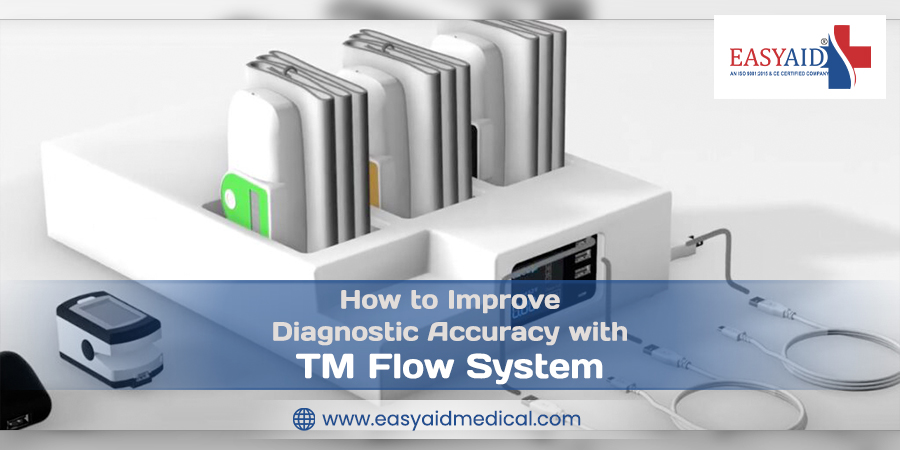The TM Flow System has incorporated several different tests, including Autonomic Nervous System Testing, to measure the heart rate and response, Sudomotor Function Testing, to test the sweat response, Pulse Wave Velocity, for the stiffness of the arteries, and Ankle-Brachial Index, to check blood pressure in the ankle in comparison with that in the arm due to peripheral artery disease.

Strategies to Apply
When it comes to increasing the diagnostic accuracy of the TM Flow test, a multifaceted strategy that includes components such as training, standardization, technology utilization, patient involvement, and quality assurance, is necessary.
Comprehensive Training and Certification
Detailed training enables the health care providers to know how to operate the TM Flow machine appropriately, analyze the outcome of the system, and keep the system in line with the right calibration procedures. It is essential to note that certifying professionals affirm competency thus guaranteeing quality in procedures involved in diagnosis.
Also Read – What are the Requirements for Lifeguard Training?
Standardize Testing Protocols
These are the expected standards on the patient sample collection (e. g. fasting period), testing procedure, and the environment (e. g. temperature). Pertinently, consistency reduces variations and hence enhances the credibility of the tests conducted.
Integrate with Electronic Health Records (EHR):
With EHR integration, data is captured, stored and retrieved with ease since EHR systems are already integrated into the working processes of a healthcare facility. One advantage is that the system is valuable for patient management and monitoring of diagnostic trends over time.
Utilize Advanced Data Analytics
It is with the help of analytical and machine learning models that various patterns and relationships hidden in TM Flow System can be revealed. This analytical capability helps improve the diagnosis given by identifying the factors that could be unnoticed but for the software analysis.
Regular Calibration and Maintenance
TM Flow equipment must be calibrated and maintained routinely to maintain the highest levels of accuracy. Employing the use of maintenance schedule and documenting service activities helps in ascertaining that equipment functions as expected.
Patient Education and Engagement
Informing the patients regarding the significance of TM Flow test in ascertaining diagnosis increases model compliance with pre-test guidelines and follow-up management. The patients who are informed act as better subjects in providing accurate results for the tests to be conducted.
Multidisciplinary Collaboration
TM Flow System results can be discussed and analyzed by different specialists from the sphere of healthcare, which contributes to the accomplishment of proper understanding of results. Case conferences refer to case analysis by several specialists whose aim is to enhance the diagnostic accuracy and manage care plans amidst healthcare professionals.
Continuous Quality Improvement
When it comes to the process of establishing a quality improvement program, it is necessary to track the performance of the system, collect the opinions of the system users and make modifications to that system based on the information that has been collected. The use of continuous refinement guarantees that improvement is always constant in diagnosis processes.
Research and Development
Carrying out research helps in gaining knowledge and the use of the TM Flow System in different clinical practices. Being involved in the clinical trials or adding to the scientific data on its application substantiates its efficacy and extends its reach.
Conclusion
The discussed strategies would allow reaching the highest diagnostic potential of the TM Flow System in healthcare providers’ practice. A focus on training, establishing standard procedures, the use of technology, teamwork, quality assurance, and research promotes the system’s capacity to enhance patients’ results and enhance practice efficiencies. Everyone knows that constant improvement is necessary in diagnostic work, especially using the results of past experience and new knowledge.

